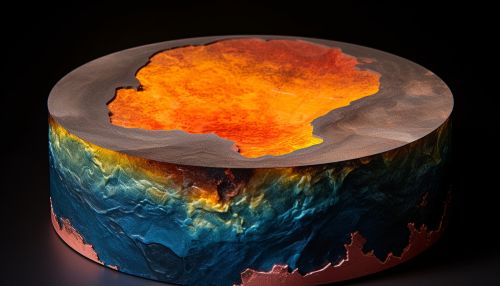The Science of Earths Core-Mantle Boundary and Geodynamics
Introduction
The core-mantle boundary (CMB) is the region of the Earth that separates the planet's outermost layer, the mantle, from its innermost layer, the core. This boundary is located approximately 2,890 kilometers beneath the Earth's surface and is a critical area of study in the field of geodynamics. The CMB is characterized by drastic changes in temperature, pressure, and composition, which influence the behavior of the Earth's interior and surface.


Core-Mantle Boundary Characteristics
The CMB is marked by a sharp increase in seismic wave velocities, indicating a change in the material properties of the Earth's interior. The core is primarily composed of iron and nickel, while the mantle is predominantly made up of silicate minerals. The temperature at the CMB is estimated to be between 3,500 and 5,500 degrees Celsius, and the pressure is about 1.3 million times the atmospheric pressure at sea level.
The CMB is not a smooth, uniform boundary. It has topographic variations, with "hills" and "valleys" that can be several kilometers high or deep. These variations are thought to be caused by the interaction between the core and mantle, including the process of mantle convection and the formation of mantle plumes.
Geodynamics and the Core-Mantle Boundary
Geodynamics is the study of the forces and processes that shape the Earth's structure over geological time scales. The CMB plays a crucial role in geodynamics as it is the site of significant heat and material exchange between the core and mantle.
Mantle Convection
Mantle convection is the slow creeping motion of Earth's solid silicate mantle caused by convection currents driven by heat from the core and the mantle's own radioactive decay. This process is responsible for the movement of tectonic plates on the Earth's surface and the creation of earthquakes, volcanoes, and mountain ranges.
Core-Mantle Interaction
The interaction between the core and mantle at the CMB is a critical factor in the Earth's geodynamics. The core's heat drives mantle convection, and the cooling of the core over time influences the Earth's magnetic field through the geodynamo process. The CMB also plays a role in the formation of mantle plumes, which can lead to volcanic hotspots on the Earth's surface.
Research and Exploration
The study of the CMB and its role in geodynamics is a challenging and ongoing area of research in earth science. Most of our understanding of the CMB comes from the analysis of seismic waves generated by earthquakes. These waves change speed, direction, and amplitude as they pass through different materials, providing clues about the Earth's internal structure.
Future research and exploration of the CMB will continue to enhance our understanding of the Earth's interior and its dynamic processes. This knowledge can help us better predict geological events such as earthquakes and volcanic eruptions, and provide insights into the Earth's past, present, and future.
